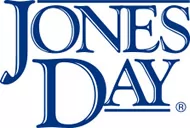In a unanimous decision authored by Justice Kagan, the U.S. Supreme Court held on February 26, 2025, that it is improper, when calculating "the defendant's profits" as a remedy for trademark infringement under the Lanham Act (15 U.S.C. § 1117(a)), to "lump together" the profits of a named defendant with those of separately incorporated, unnamed affiliates. Dewberry Group, Inc. v. Dewberry Engineers Inc., Case No. 23-900, 604 U.S. ____ (2025). The Court vacated and remanded a decision that had awarded $43 million based on profits earned by non-defendant affiliates.
The Court found the term "defendant" in § 1117(a) had "its usual legal meaning": the party named in the complaint. Because the complaint here did not name the affiliates as defendants, their profits could not be "the defendant's profits."
The Court made clear it left unaddressed "a number of questions" that might be raised on remand or in other cases, and Justice Sotomayor's concurrence emphasized this. For example, the Court offered no opinion on veil piercing, which in certain circumstances allows courts to pierce corporate separateness, and Justice Sotomayor provided examples of "practical business realities" that, even while respecting principles of corporate separateness, might warrant consideration of affiliate profits when calculating "the defendant's profits." For example, such profits might include revenue effectively assigned to an affiliate through a non-arm's-length relationship or compensation for infringing services the defendant indirectly received through affiliates.
The Court also stated no view on the separate, "just-sum" provision in § 1117(a), which grants a court discretion to "enter judgment for such sum as the court shall find to be just" if it finds that "the amount of the recovery based on profits is either inadequate or excessive." As advocated by the plaintiff here, this provision enables courts to consider whether a different figure than "defendant's profits" better reflects its financial gain, and if so, consider whether it is just to include profits of related entities.
This decision highlights the importance of carefully evaluating the parties named in a trademark infringement action, as well as considering the accounting arrangements between affiliated entities in evaluating potential damages for trademark infringement.
Jones Day represented amici in support of the respondent.
The content of this article is intended to provide a general guide to the subject matter. Specialist advice should be sought about your specific circumstances.





